Yesterday the Federal Reserve released data on the balance sheet showing that the total balances fell by roughly $26 billion through August 31 from August 24. The most significant decline came from MBS securities which fell by $16.6 billion.
Over the coming weeks, we should see the size of the balance sheet drop at a much faster pace, given that the roll-off moves up to almost $100 billion this month.
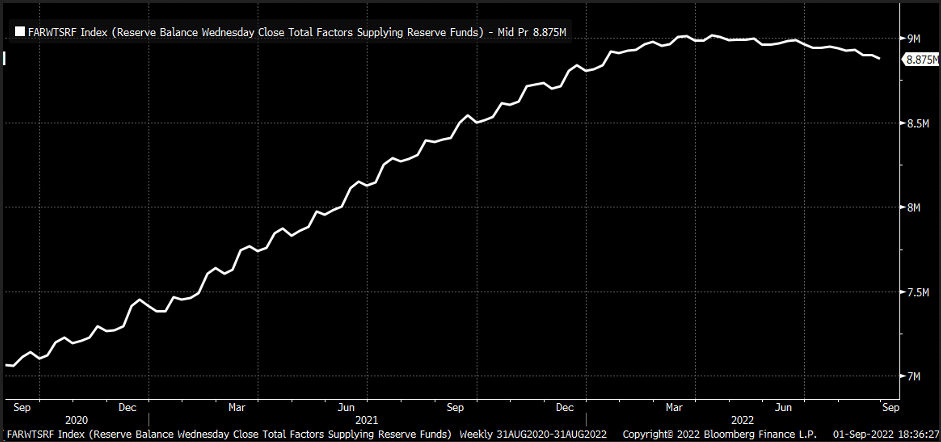
Additionally, this week, we saw the Treasury General Account rise by almost $140 billion to around $670 billion, while reverse repurchase agreements increase by about $34 billion to roughly $2.53 trillion. Meanwhile, “other” deposits held at the Federal Reserve declined by approximately $46.2 billion, which could be anything from government-sponsored entities or international organizations. These three accounts marked the most notable changes on the balance sheet, affecting reserve balances.
When an account rises in value, it removes reserve balances, and when it falls in value, it adds reserve balances.
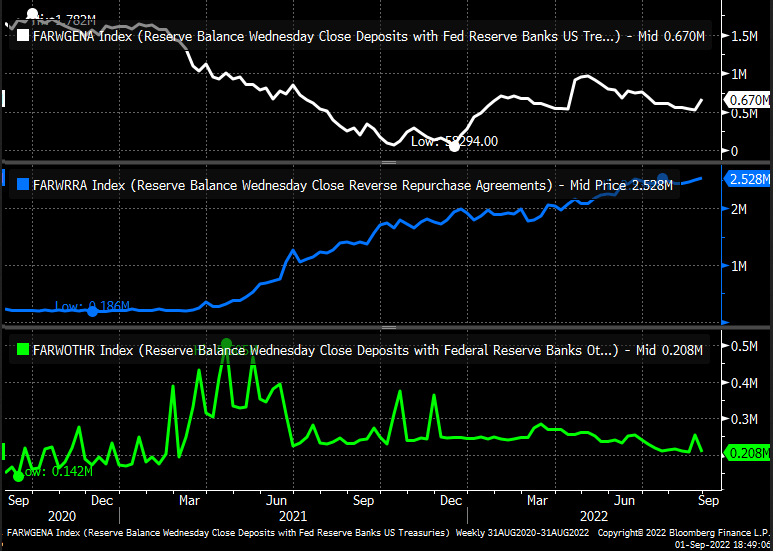
Ultimately, reserve balances fell by $155 billion this week, pushing total reserves to $3.11 billion and near their lowest level this year. The last time reserves fell this low was back on June 28, around the time of the stock market bottom. We care a lot about reserve balances because they appear to affect the S&P 500 and the stock market around 1 to 2 weeks later. It would suggest the S&P 500 could fall sharply as reserves were drained and leverage is removed from the market.
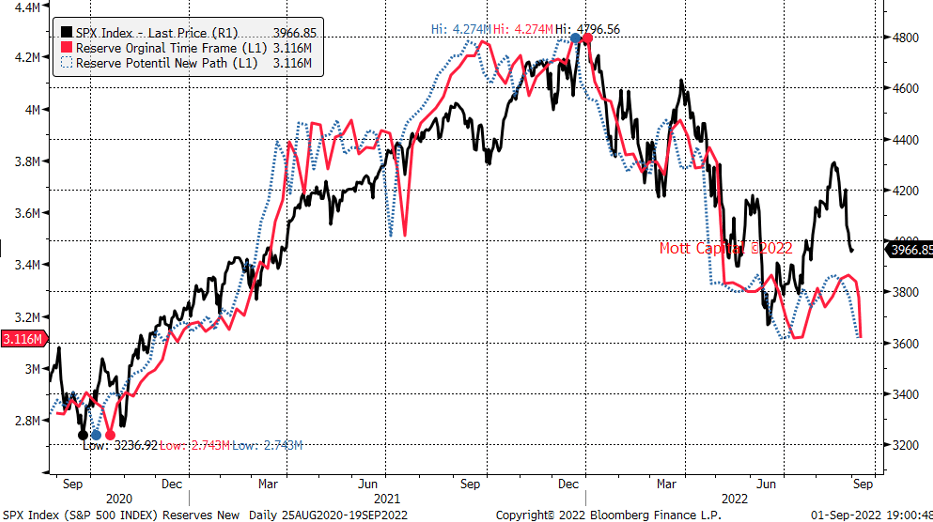
What is crystal clear to me is when the July and August rallies were in full force, reserve balances were rising, and conditions around leverage were easing. Every week, the Chicago Fed puts out a sub-index of its national financial condition index that measure conditions around margin (blue line). When the line rises, conditions tighten; when it falls, it indicates conditions are easing. Since August 10, reserve balances have fallen, margin conditions have tightened, meaning leverage is removed or not as readily available, and the stock market has fallen.
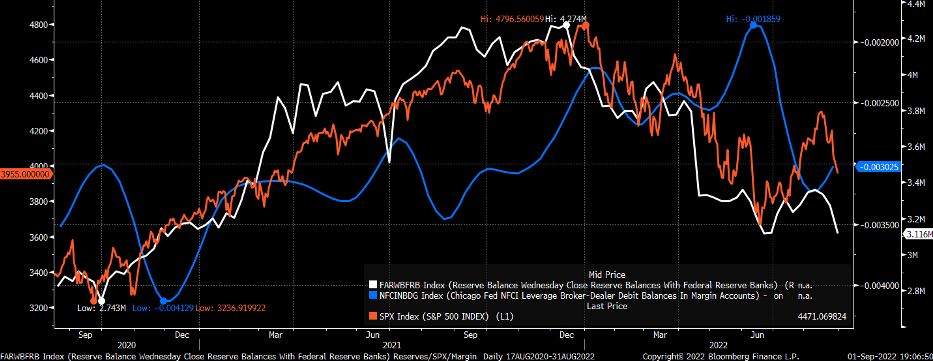
Because reserves were rising and margin conditions were easing, the market cap of the S&P 500 rose to around 11 times the size of reserve balances. Since July 2020, the market cap of the S&P 500 has been between roughly 9.5 and 10.5 times the size of the balance sheet. It means that as reserve balances fall and leverage is removed, the S&P 500 could have much further to fall. If the market cap of the S&P 500 returns to 10 times the reserve balances, the market cap would fall to around $31.1 trillion from its current $34.6 trillion, or another 10%, or just below 3,600.
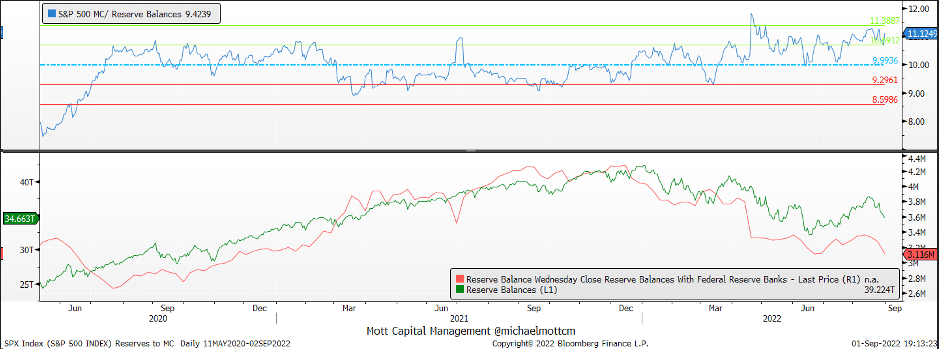
The next two weeks will be critical in proving or disproving this theory. This is not a science, but it is something I have been tracking for some time and use when making calls on market directions.
